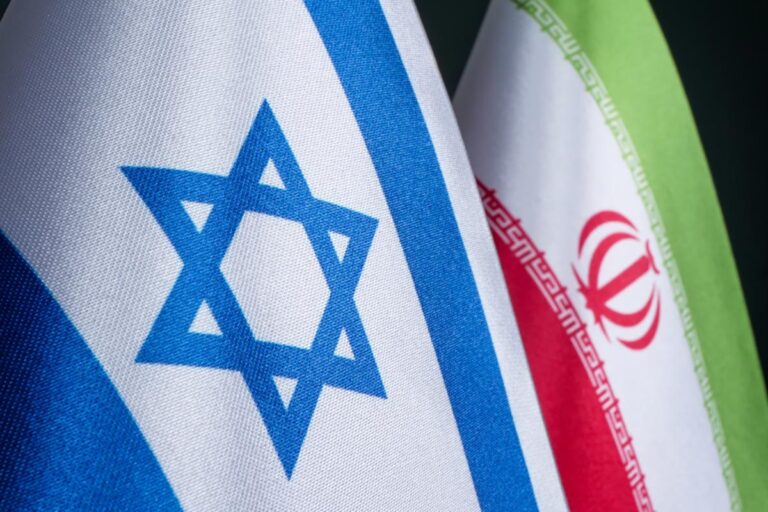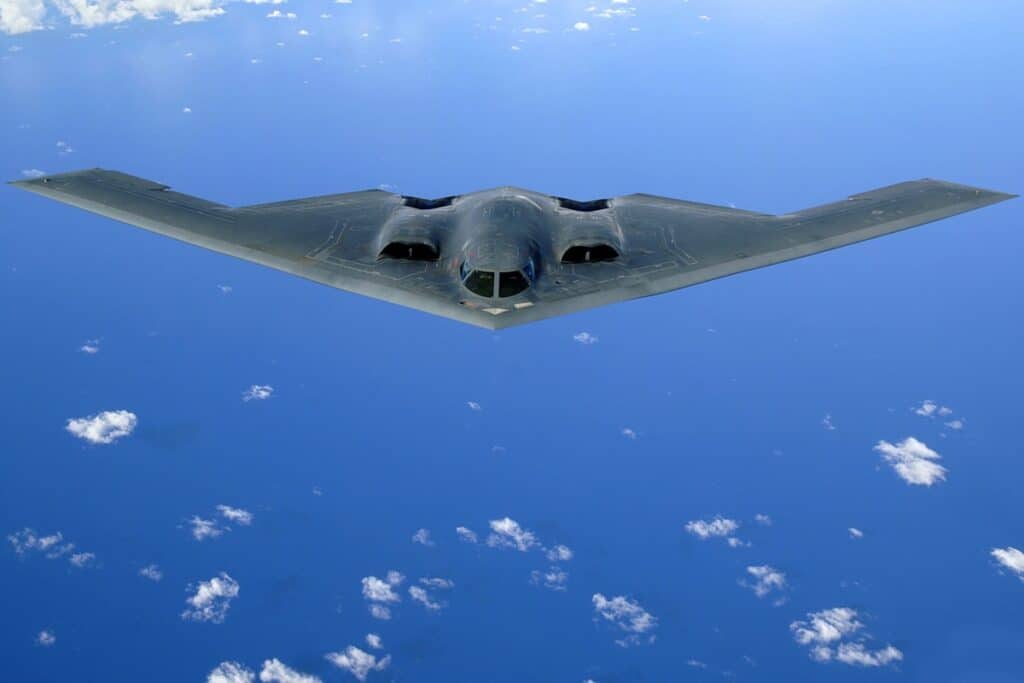
Israel and Iran reached a ceasefire early Tuesday morning, 12 days after Israel launched a surprise preemptive strike on Iran’s nuclear program.
U.S. President Donald Trump announced the ceasefire in a post on Truth Social.
“CONGRATULATIONS TO EVERYONE! It has been fully agreed by and between Israel and Iran that there will be a Complete and Total CEASEFIRE (in approximately 6 hours from now, when Israel and Iran have wound down and completed their in progress, final missions!), for 12 hours, at which point the War will be considered, ENDED!” Trump wrote.
The president explained that the ceasefire would take effect in stages, with Iran ceasing fire several hours before Israel ceased fire. According to the post, after 24 hours pass without fighting, the war will be considered officially over.
“On the assumption that everything works as it should, which it will, I would like to congratulate both Countries, Israel and Iran, on having the Stamina, Courage, and Intelligence to end, what should be called, ‘THE 12 DAY WAR.’ This is a War that could have gone on for years, and destroyed the entire Middle East, but it didn’t, and never will! God bless Israel, God bless Iran, God bless the Middle East, God bless the United States of America, and GOD BLESS THE WORLD!” Trump added.
In the last hour before the ceasefire began, several missiles were launched from Iran toward Israel. Four people were killed after a missile hit an apartment building in Beersheba. The missile fire continued for several hours after the ceasefire began as well.
.@POTUS: "These guys gotta calm down. It's ridiculous. I didn't like plenty of things that I saw yesterday. I didn't like the fact that Israel unloaded right after we made the deal … and I didn't like the fact that the retaliation was very strong." pic.twitter.com/Tv7YvdsXmp
— Rapid Response 47 (@RapidResponse47) June 24, 2025
After the missile fire, Trump issued statements accusing both Israel and Iran of violating the ceasefire agreement and warning Israel not to respond to the missile fire.
— Rapid Response 47 (@RapidResponse47) June 24, 2025
After discussions between Trump and Israeli Prime Minister Benjamin Netanyahu, Israel responded to the missile attacks by striking an Iranian radar system north of Tehran. The strike was intended to be symbolic while avoiding a renewed escalation.
Iran strikes American base in Qatar
The ceasefire announcement came just hours after Iran launched a retaliatory missile strike on a U.S. base in Qatar, which came in response to U.S. strikes on Iranian nuclear facilities. No injuries or damage were reported in the Iranian attack.
Early Sunday morning, the United States struck Iranian nuclear facilities in Fordow, Natanz, and Isfahan.

“We have completed our very successful attack on the three Nuclear sites in Iran, including Fordow, Natanz, and Esfahan,” the president wrote in a Truth Social post after the strikes. “All planes are now outside of Iran air space. A full payload of BOMBS was dropped on the primary site, Fordow. All planes are safely on their way home. Congratulations to our great American Warriors. There is not another military in the World that could have done this. NOW IS THE TIME FOR PEACE! Thank you for your attention to this matter.”
— Donald J. Trump (@realDonaldTrump) June 21, 2025
The strikes were carried out partially with B-2 bombers, aircraft that can carry powerful bunker-busting bombs that can damage structures even if they’re 200 feet underground.
A U.S. official told the New York Times that six B-2 bombers dropped a dozen bunker buster bombs on the Fordow site. Navy submarines launched 30 Tomahawk missiles on the Natanz and Isfahan sites, according to the report, while another two bunker busters were dropped on Natanz.
Iranian officials confirmed that strikes had targeted the three nuclear facilities, although they insisted that nuclear material had been transferred out of these sites in advance.
Did the strikes work?
Damage assessments are still ongoing, so it remains unclear exactly how effective the American and Israel strikes were.
An initial assessment by the U.S.’s Defense Intelligence Agency leaked to American media outlets on Tuesday found that the damage from the strikes was limited and only set back Iran’s nuclear program by a few years. The report stated that Iran’s centrifuges are mostly intact and that Iran’s stockpile of enriched uranium wasn’t destroyed.
However, this was only the assessment of one American intelligence agency and the report noted that the conclusions were of a “low-confidence” level, meaning there isn’t a lot of certainty about these conclusions.
In contrast, the Institute for Science and International Security, which has been monitoring Iran’s nuclear program for years, determined that Israel and the U.S. had “effectively destroyed” Iran’s centrifuge enrichment program.
The institute noted, however, that Iran still likely had a stockpile of some highly enriched uranium and new centrifuges that had already been manufactured before the war but hadn’t been installed yet.
“These non-destroyed parts pose a threat as they can be used in the future to produce weapon-grade uranium,” the institute warned.
The assessments are still ongoing, as even Iran is still unsure about exactly how much damage was done.
Two Israeli officials told Axios on Wednesday that Iran’s stockpile of enriched uranium is largely buried under rubble at the Isfahan and Fordow sites.
Beyond the physical damage done to Iran’s nuclear facilities, the loss of major nuclear scientists will also serve as a setback for the country’s nuclear program.
Rafael Grossi, the head of the UN nuclear watchdog, the International Atomic Energy Agency, warned on Wednesday that Iran said it took “special measures” to protect its stockpile of enriched uranium. Grossi stressed that there was an urgent need for the IAEA to get inspectors into Iran to figure out what material survived the strikes.
The IAEA chief added that Iran knows how to rebuild its nuclear infrastructure, although it will take time. He discouraged people from focusing on trying to figure out exactly how long it will take, instead urging leaders to focus on reaching a deal as soon as possible.
“There is now a possibility, an opening, and we shouldn’t miss that opportunity. The technological knowledge is there and the industrial capacity is there—that no one can deny, so we need to work together with them,” Grossi said.
American strikes took the world by surprise
Many were surprised by the strikes on Sunday morning.
While Trump had been openly considering joining the war, he also insisted in recent days that he preferred to pursue diplomatic options before deciding on strikes.
On Thursday, Trump implied that he wouldn’t be making a decision on the matter anytime soon.
“Based on the fact that there’s a substantial chance of negotiations that may or may not take place with Iran in the near future, I will make my decision whether or not to go within the next two weeks,” he said in a statement read by White House press secretary Karoline Leavitt at the time.
Additionally, a series of reports published in Israeli and American media over the past week went back and forth on whether or not the U.S. would get involved.
Israel’s Channel 12 news reported shortly after the American strikes that Israel had already known for several days that Trump would authorize the strikes. Israel and the U.S. worked together to trick Iran into thinking they were in disagreement on the issue to give a false sense of security, according to the report.
Could the war expand across the Middle East?
Opponents of U.S. involvement in the war have expressed concerns that an American intervention would lead to a regional escalation of the conflict.
Iran has threatened to strike U.S. bases across the region, including in Arab states along the Persian Gulf, if it intervened. The Islamic Republic also threatened to block the Strait of Hormuz, a central waterway through which much of the world’s oil is shipped.
The Houthis, an Iran-backed terrorist group in Yemen, also threatened to restart attacks on American ships in the Red Sea and Indian Ocean if the U.S. intervened.
The Houthis and the U.S. reached a ceasefire in early May in which the terrorist group agreed to stop strikes on American vessels in return for a cessation of U.S. strikes in Yemen. Houthi missile attacks have continued against Israel, however, as the Jewish state wasn’t included in that agreement.
Saudi Arabia, the United Arab Emirates, and other countries along the Persian Gulf have expressed concerns that they could be pulled into the conflict if the U.S. got involved, as these countries host some American bases and are seen as Western allies by Iran.
President Donald J. Trump Delivers Address to the Nation, June 21, 2025 https://t.co/yutRDvtWv0
— The White House (@WhiteHouse) June 22, 2025
Trump warned in a statement on Sunday morning that the U.S. would conduct additional strikes on Iran if a deal wasn’t reached soon. He threatened that “future attacks will be far greater and a lot easier.”
The president warned as well that any retaliation by Iran against the U.S. would be “met with force far greater than what was witnessed tonight.”
What nuclear facilities were hit by the U.S.?
Read more: What is Iran’s nuclear program and why did Israel decide to act now?
Fordow
The Fordow nuclear site is located deep underground, inside a mountain, and houses thousands of centrifuges used to enrich uranium.
Many analysts were concerned that if only Iran’s other nuclear sites were destroyed, Iran could have tried to move more of its program into this hard-to-hit facility.
The facility’s location deep underground made targeting it really difficult. Only the U.S. has planes that can carry the bunker-busting bombs needed to destroy a facility this far underground. There was some doubt about whether these bombs could even completely destroy the site, and it may take time to verify how much damage was actually done.
On its own, Israel had some options for destroying the facility, although U.S. intervention definitely made it easier.
Israel may have been able to destroy the entrances of the facility on its own, but that could have left Iran able to rebuild it relatively quickly. Instead of airstrikes, Israel could have also tried to sabotage the site in other ways. For example, it could have tried to airdrop commandos at the site to plant explosives inside the facility and destroy it from the inside. Israel conducted a similar operation at a missile facility in Syria last year.
Isfahan Complex
The Isfahan nuclear complex includes several different facilities used for nuclear research, processing uranium ahead of enrichment, and turning enriched uranium into uranium metal.
Natanz
The Natanz nuclear facility is Iran’s main enrichment facility, containing over 10,000 centrifuges.
Part of the facility is underground to defend against airstrikes.
Iran’s attempts to build a nuclear bomb
For years, Iran has conducted covert and overt operations to develop a nuclear weapon, although it has continuously denied that its nuclear program isn’t peaceful.
In 2015, Iran signed a deal with the U.S., China, France, Germany, Russia, and the United Kingdom, known as the Joint Comprehensive Plan of Action (JCPOA).
That deal was meant to roll back Iran’s nuclear program to ensure it would take at least a year for Iran to develop a bomb, giving world powers enough time to respond before the weapon was developed.
Israel argued the deal wasn’t strong enough and that Iran would continue pursuing a weapon even under the agreement, while simultaneously benefiting from the lifting of sanctions. Israel also argued that Iran hadn’t been honest about the extent of its nuclear activity and couldn’t be trusted.
In 2018, Trump withdrew from the JCPOA, insisting that a better deal could be reached. Trump argued that the JCPOA enriched Iran, which gave it the money to fund terrorism around the world.
Since then, Iran has significantly advanced its nuclear program, enriching large amounts of uranium to high levels of about 60%. In modern nuclear weapons, uranium is usually enriched to 90% (Check out the bottom of this article for an explanation of what all this means and why it’s important for nuclear weapons development).
As of last month, Iran was estimated to have enough highly enriched uranium that it could prepare 11 weapons within just one month. There are other steps Iran would still need to complete to develop a nuclear missile, but it’s estimated that this process would take at most six months to a year.
In recent months, Iran and the Trump administration have been conducting negotiations aimed at reaching a deal to prevent Iran from developing a nuclear weapon.
The talks had hit a dead end in recent weeks, as Iran insisted on continuing to enrich uranium domestically, while the U.S. rejected such an option.
Alongside their nuclear ambitions, the Khamenei regime, which runs Iran, has set the destruction of Israel as a central goal over the years.
To that end, they’ve organized, armed, and funded a massive network of proxy terrorist groups across the Middle East and around the world for over 40 years, including Hamas and Hezbollah.
This network was used to attack Israel, the U.S., and other countries, including Saudi Arabia, while keeping the conflict away from Iran itself. The network also served as a deterrent to allow Iran to continue working on its nuclear program, threatening to respond to anyone who could attack the country.
During the war sparked by the October 7 attacks, Israel heavily damaged many of Iran’s proxies, especially Hamas and Hezbollah. Iran’s proxy network suffered another heavy blow when the Syrian government, which was a central base for the network, was overthrown by rebels heavily opposed to the Khamenei regime late last year.
Iran and Israel also traded blows directly twice throughout the war, with Israel taking out several Iranian commanders and much of their advanced air defense system and Iran launching barrages of hundreds of missiles and drones at Israel.
For years, Israelis debated whether fighting Iran’s proxy network was enough or if it was necessary to take out the “head of the octopus” which was funding and arming the network (AKA Iran). Part of the problem was the threat posed by the network to Israel, preventing such a strike.
In the days leading up to Israel’s strikes, Trump said that he had become a lot more pessimistic about the chances of reaching a deal. Additionally, the U.S. began pulling nonessential personnel out of embassies in the Middle East, and security alerts were issued for the region.
Originally Published Jun 21, 2025 10:45PM EDT

